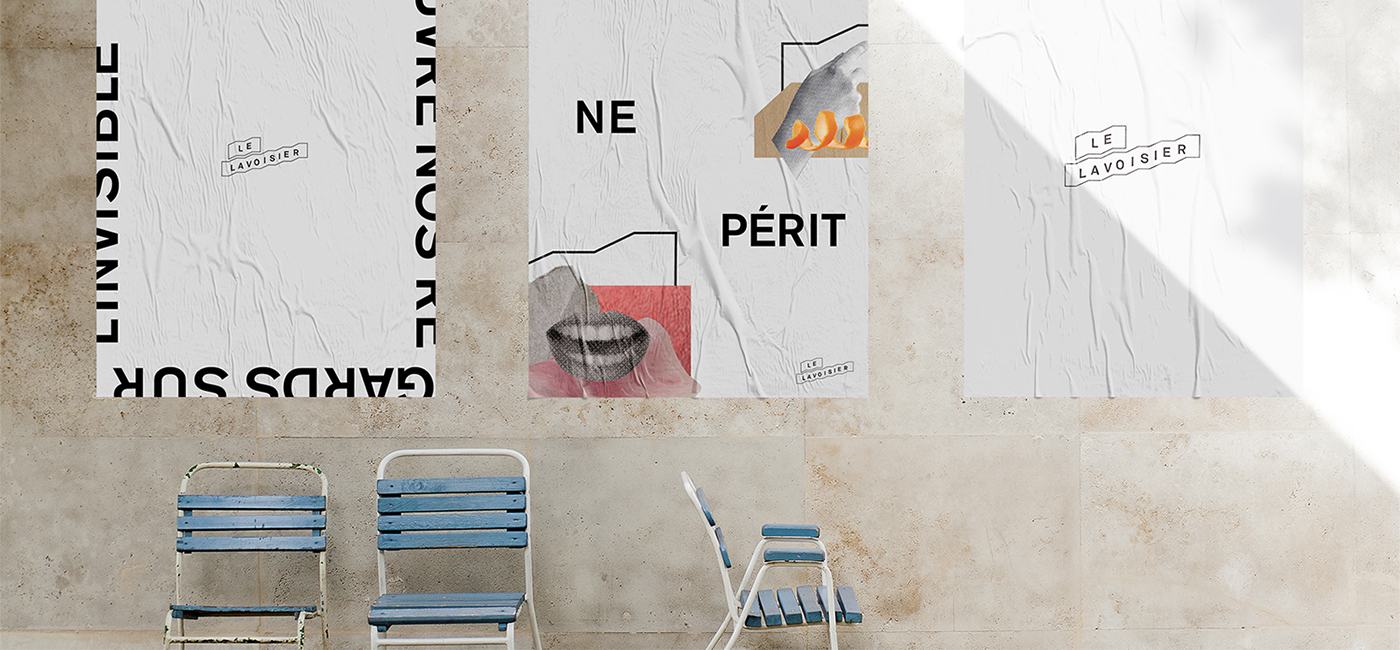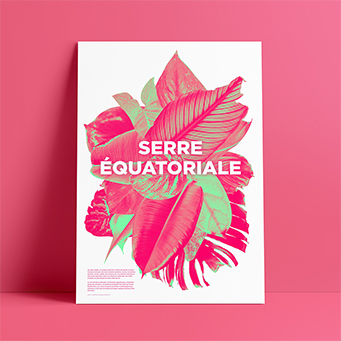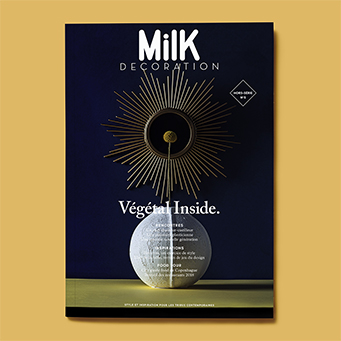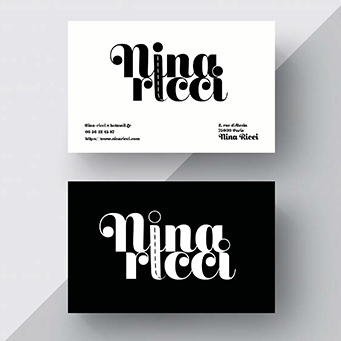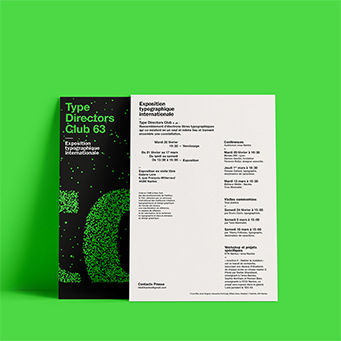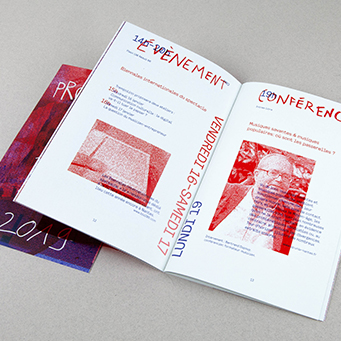2 years’ programme
The aim of the Master in Design course is to allow students to manage the production process and to drive a project to its entirety.
Through the two years of the master cycle, an important part of the classes are taught by visiting lecturers who excel in their field.
Teamwork and project mode, as well as semester in an international partner school and new internships during the fourth year, prepare students to their professional integration.
The diploma project and the finalisation of the professional portfolio during the 5th year conclude the cycle.
4th year Design Course
A global approach to communication is acquired progressively, and the students work on real cases, from the brief to the finalisation of the project.
The 4th year will allow the student to make his choice as to the continuation of his course by specialising in either: Advertising, Digital Design, Graphic Design (visual identity and packaging), Design and Typography (only on the Paris Campus), or in Design & Strategy, strenthening his professional practice as a future Artistic Director.
5th year Design Course
The 5th year allows students to hone and integrate the skills they have acquired so far. The fundamental subjects are still taught, but the subjects are more complex and offer a more global approach to communication. Students are required, through this last year, to demonstrate their ability to master the full range of communication tools and to integrate them into an original approach of visual creation with the ultimate objective of presenting and defending their final project in front of a jury.
Courses
Students observe and understand the meaning of the simple visual signs around them. They learn how to simplify and reduce to the simplest form, while retaining the specific characteristics of the product, brand and company represented.
Students learn how to design and develop packaging while respecting the constraints and regulations of the product. They reconcile the wealth of creativity with these strict constraints and observe the creations of competitors’ products. Packaging calls upon all of the graphic disciplines: typography, colours, illustration, photography and page layout.
Students get acquainted with mage culture and manifold expressions of contemporary graphic arts. This course covers the history of graphic arts and its various movements, typography animation as well as television identities. They gain a better understanding of signs and images use in order to develop a unique expression and an original personal style based on solid knowledge of existing creations.
Before the campaign declines on media, there is an important stage, which is a reflection on the creative strategy in artistic direction. This approach is essential, from the receiving of the briefing to the realization of the campaign. The student is responsible of the visual aspect of the campaign and provides a genuine work of an Artistic Director, as in a professional situation.
Copywriters are in charge of the message and the texts of a campaign. They work in tandem with the artistic director as part of the creation team. Artistic director needs to understand the basis of copywriting in order to achieve effective dialogue with their team members.
A good command of typeface, which represents the basic unit of text, is vital for it, is the heart and soul of any visual creation. The typography, complementary of the image gives to the creation its personality. Each typeface is a shape, a design in itself; it has to be readable and reinforce the overall concept of the creation.
Students gain an understanding of the essential rules of text composition in the page, margins, grids and type colour. Layout is a comprehensive reflection on the art of harmonizing text and image in a determined format. The composition must be harmonious and hierarchical for a clear and quick reading of the print media or graphic screen.
Motion design is the art of graphic design in motion by the combination of typography, graphics and sound. Students learn to use animation softwares to be able to produce projects such as advertising video clip, corporate video…
Students design and produce web sites and applications for professional situations (product launches, webzine, etc.) by focusing for each project either on the technical aspect (different languages), or on the formal aspect (different forms). Students thus learn how to manage a digital creation project and its technical production with the various people involved (production, integration, development).
Strategy is upstream to any process of creation; it is what guides the design and creation work. Graphic arts students need to master this aspect of the creative approach, to argue better their creation. In other words, it is generally of the responsibility of the sales manager of the agency.
Semiology, the science of signs, equips students with the tools reading for decoding and understanding their formal and semantic origins. This critical reading of images allows students to identify the visual grammars presiding over their development, and the recurring meaning in their construction. It permits students to gain a better control over their creation.
All creative professions involve working with people. Learning how to lead a team effectively, supervise a project and manage customer relations is a must. The objective of this course is to give students the basic notions of management such as negotiation, advising, argumentation, organization, conflict management and leadership.
